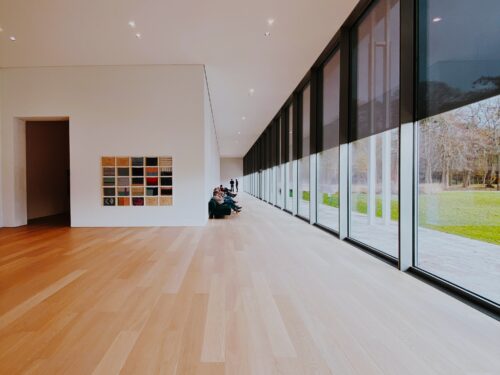
How to Choose the Best Wood Floor for High-Traffic Areas
High-traffic areas in your home, such as entryways, hallways, and living rooms, need flooring that can withstand heavy foot traffic without compromising on style or comfort. Wood flooring is a popular choice for these spaces due to its durability and timeless appeal, but not all wood floors are created equal. In this post, we’ll guide you through how to choose the best wood floor for high-traffic areas.
1. Hardness Matters: The Janka Hardness Scale
One of the most important factors to consider when choosing wood flooring for high-traffic areas is the hardness of the wood. The Janka Hardness Scale is a standard measurement that rates the resistance of wood to denting and wear. The higher the Janka score, the harder and more durable the wood.
For high-traffic areas, consider hardwood species with high Janka ratings such as:
- Hickory (1820)
- Maple (1450)
- White Oak (1360)
- Brazilian Cherry (2350)
These species are more resistant to scratches, dents, and wear, making them ideal for busy areas of your home.
2. Engineered vs. Solid Hardwood
In high-traffic areas, you’ll also want to consider whether to choose engineered or solid hardwood. Engineered wood flooring is made of multiple layers of wood, with a top layer of real hardwood. This construction makes it more stable and less prone to warping, especially in areas with fluctuating humidity or temperature.
Solid hardwood is made of a single piece of wood and can be refinished multiple times, but it may be more susceptible to expansion and contraction in high-traffic areas.
Tip: Engineered hardwood may be a better option for high-traffic areas due to its stability and resistance to moisture.
3. Opt for a Durable Finish
The finish you choose can make a big difference in how well your wood floors hold up to traffic. A high-quality finish will protect the wood from scratches, scuffs, and spills. Some of the most durable finishes for high-traffic areas include:
- Aluminum Oxide Finish: Extremely hard and long-lasting, offering excellent protection against wear.
- Polyurethane Finish: Available in both oil- and water-based forms, this finish provides a durable, scratch-resistant surface.
- UV-Cured Finishes: These finishes are hardened with ultraviolet light, making them tough and ideal for high-traffic areas.
For a matte or satin finish, scratches and wear will be less noticeable compared to glossy finishes.
4. Consider Wood Grain and Texture
In high-traffic areas, visible wear and scratches are inevitable, but choosing the right wood grain and texture can help disguise them. Woods with a more pronounced grain, such as oak or hickory, can hide scratches and dents better than smoother woods like maple or birch.
Additionally, textured finishes like wire-brushed or hand-scraped wood flooring can help mask imperfections and give the floor a more rustic, lived-in look, perfect for high-traffic areas.
5. Maintenance and Care
Even the most durable wood floors need regular maintenance to keep them looking their best in high-traffic areas. Simple measures like using area rugs or runners, placing felt pads under furniture, and sweeping or vacuuming regularly can extend the life of your wood floors.
It’s also important to clean up spills immediately and avoid using harsh cleaning chemicals that can damage the finish.
Choosing the best wood floor for high-traffic areas requires careful consideration of wood species, finishes, and installation methods. By selecting a hardwood with a high Janka rating, opting for a durable finish, and choosing a textured grain, you can enjoy beautiful wood floors that stand up to the demands of everyday life. With proper care and maintenance, your floors will remain a stunning feature of your home for years to come.


